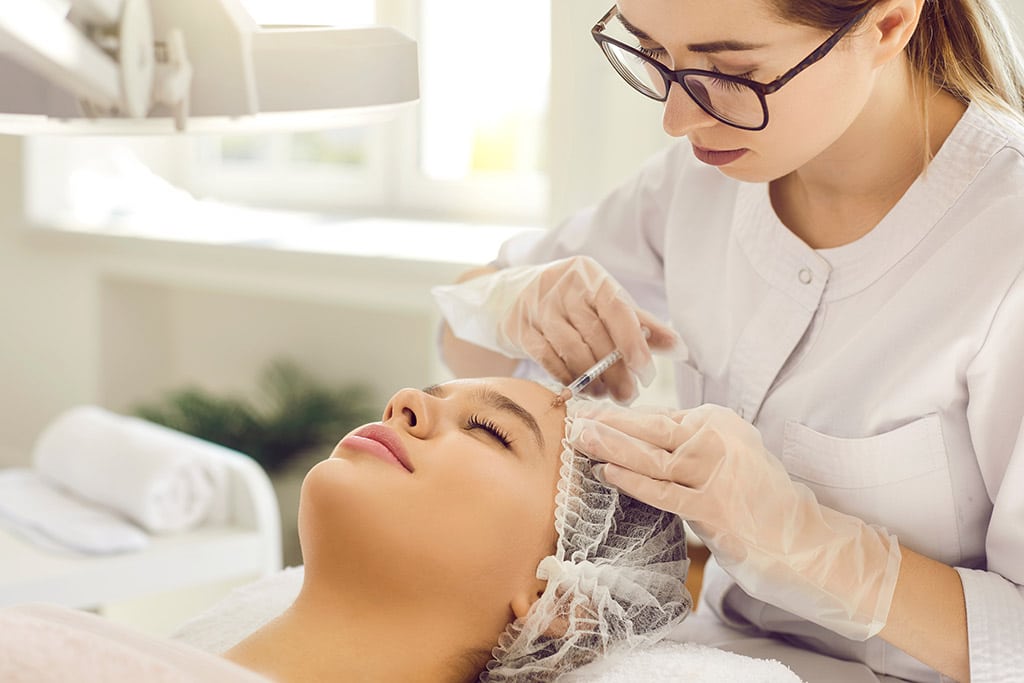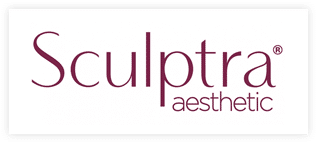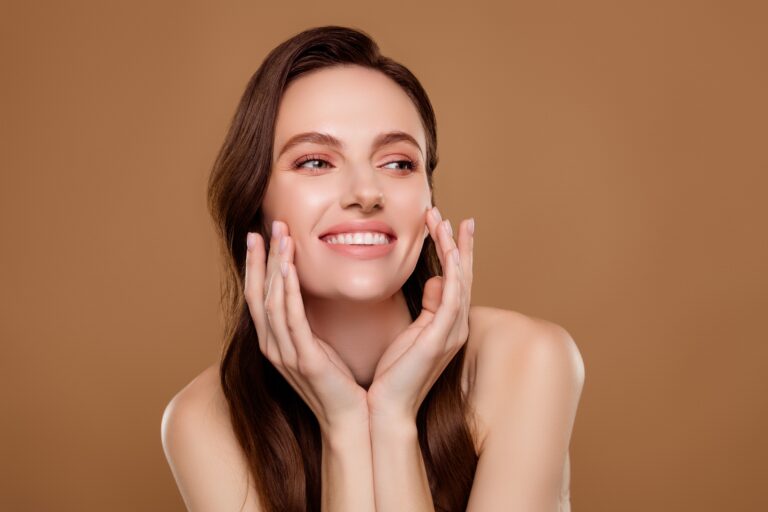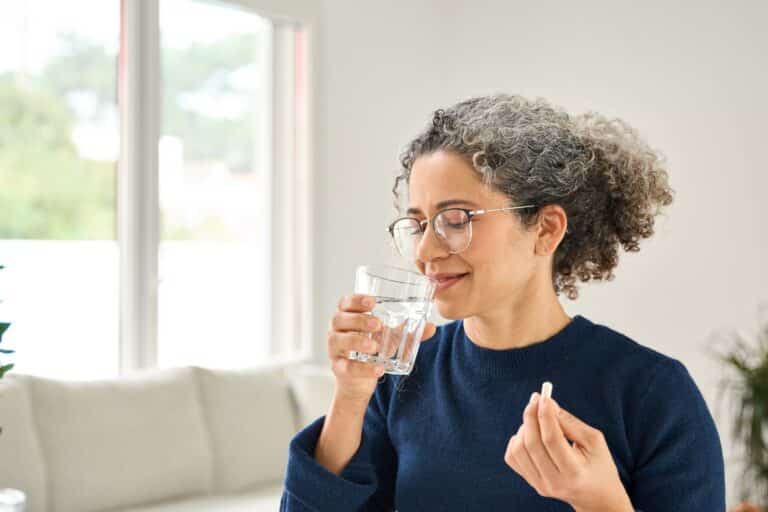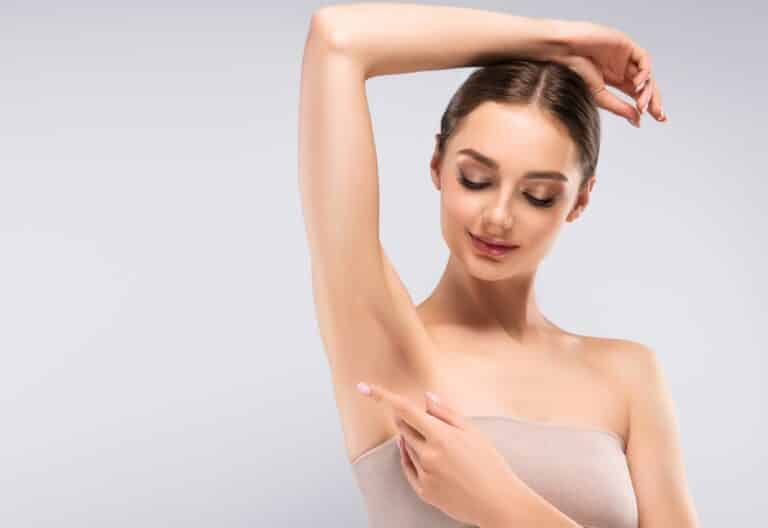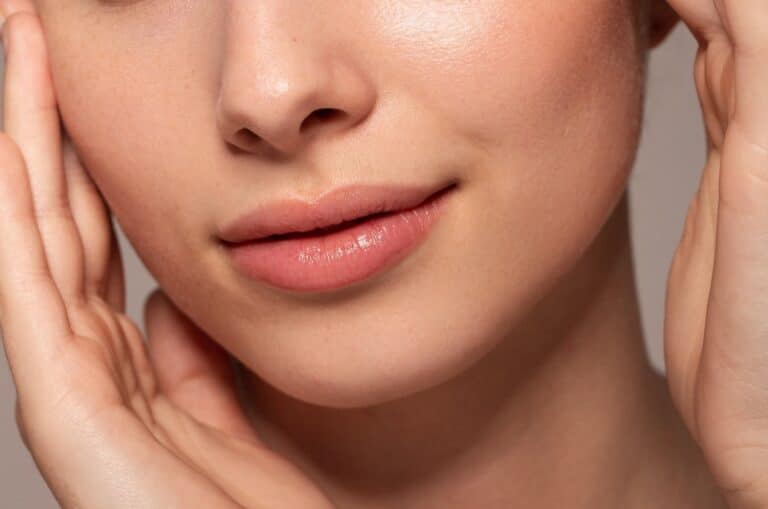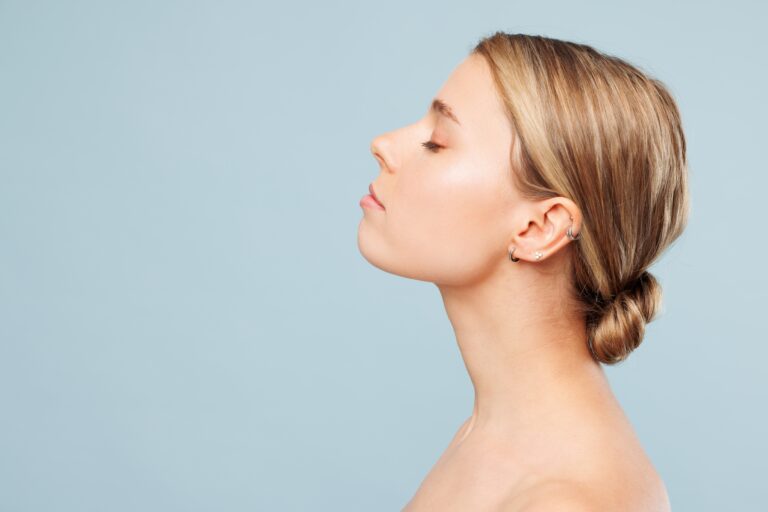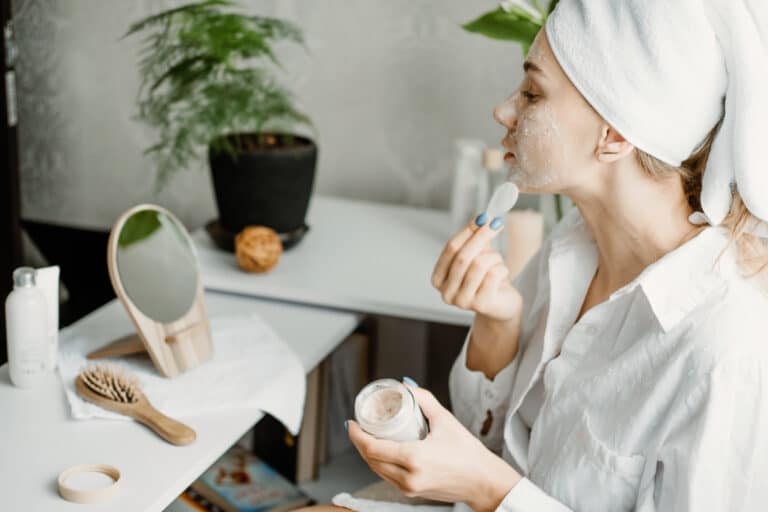What is Sculptra?
Sculptra Aesthetic is a soft tissue injectable that restores volume to reduce hollows and deflated skin. Sculptra is made of micro particles of Poly-L-Lactic Acid (PLLC), a synthetic form of lactic acid. Your body produces lactic acid after exercise, making PPLC biocompatible. This means that it won’t cause allergic reactions after it’s injected because your body recognizes it as a familiar product.
Sculptra is diluted with saline and anesthetic before it is injected into the deeper skin layers. The small PLLC particles push on cells called fibroblasts, and this pushing force stimulates them to produce collagen over the course of 4-8 weeks. Often 2-3 treatments are recommended to achieve volumization goals. Because Sculptra stimulates your body to make its own collagen, results appear very natural. Minimal side effects include bruising, pain at injection sites, and swelling and redness, which typically resolve within a few days to a week after injections.
Sculptra Aesthetic more than a filler; it’s a volumizer. Unlike hyaluronic acid fillers that provide temporary improvement in the appearance of lines and wrinkles, Sculptra is an anti-aging treatment that works to address volume loss that underlies facial aging.
Sculptra stimulates your body to synthesize collagen and gradually restores a more youthful appearance over the course of 2-4 treatments.
Facial Aging
Studies report that we lose about 1% of collagen per year after age 18. In our late 20s, collagen production begins to slow, and this changes our skin’s texture and tone, eventually leading to fine lines and wrinkles. Environmental factors like smoking, pollution, stress and sun exposure stimulate production of free radicals that damage and degrade collagen and elastin fibers faster than new collagen can be created.
Many procedures can rebuild collagen like Laser Resurfacing or Microneedling RF, but these treatments are often associated with downtime or recovery. Sculptra offers an injectable alternative to these laser and heat-based devices for collagen synthesis, unlike most other soft tissue injections that “fill” lines more immediately.
How is Sculptra used?
Sculptra applications:
- Rejuvenates the face by restoring volume, lifting the skin, and smoothing lines and creases.
- Restores volume to the cheek area, which helps elevate jowls.
- Volumizes temple hollows.
- Smooths the smile lines between the nose and the mouth (nasolabial folds).
- Redefines the jawline for a cleaner profile
- Improves the appearance of the décolleté, enhancing skin texture.
- Improves the appearance of your hands, softening protruding tendons and veins.
- Harmonizes asymmetries of the face, creating youthful balance.
What many patients like most about a series of Sculptra injections is that improvements are gradual. Small changes keep the treated areas looking natural and final results can last over two years.
All of our leading dermatologists at Moy-Fincher-Chipps are experts at assessing aging, and they look forward to offering their honest opinions about what treatment or treatments might help you achieve your appearance goals most naturally. Schedule a consultation to determine if Sculptra may be right for you.
Related Posts
If you’re like most people, you probably associate Botox primarily with smoothing out wrinkles and fine lines. However, this versatile treatment offers a remarkable range of cosmetic benefits that extend far beyond basic wrinkle reduction. Many patients are surprised to learn that Botox can address multiple cosmetic concerns with minimal downtime and noticeable results. Keep…
After years of exposure to environmental stressors such as the sun, toxins, and pollution, damage can start to show on your skin. The good news is that supplements for skin health can repair skin damage from the inside out and ward off the signs of aging, leaving you with smoother, brighter, and youthful skin. Keep…
For many people, unwanted body hair can be a source of frustration. Shaving, waxing, and other hair removal methods can be time-consuming, inconvenient, and sometimes even painful. Laser hair removal offers a more permanent solution, but one common question many people have is: how long does it take for hair to grow back after treatment?…
The Botox lip flip is a popular cosmetic treatment designed to subtly enhance the appearance of your lips. By relaxing the muscles around the upper lip, this procedure allows more of the lip to show when you smile, creating a fuller, more youthful look. Unlike fillers, the Botox lip flip uses botulinum toxin to achieve…
For many, a defined jawline is a hallmark of a youthful and sculpted face. But as you age, or due to genetics, the jawline can become less distinct. This can be caused by a combination of factors, including: Loss of volume: The skin loses elasticity and collagen over time, leading to a sagging appearance. Muscle…
Winter can be a challenging time for those living with psoriasis. The colder temperatures, drier air, and reduced sunlight exposure can all contribute to flare-ups, making itchy and uncomfortable plaques worse. Cold, dry air can exacerbate psoriasis symptoms, making it even more challenging to manage. Understanding the underlying causes of psoriasis and the factors that…

